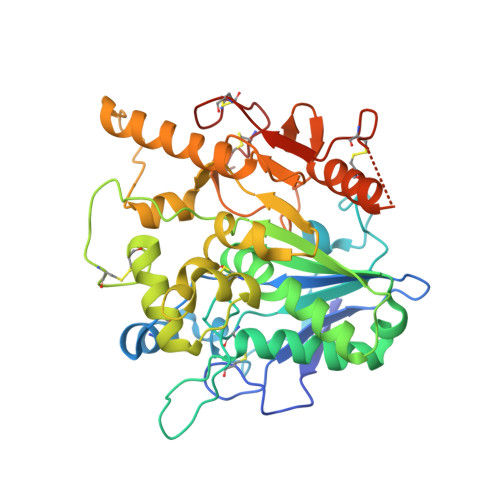Designed switch from covalent to non-covalent inhibitors of carboxylesterase Notum activity.
Atkinson, B.N., Willis, N.J., Zhao, Y., Patel, C., Frew, S., Costelloe, K., Magno, L., Svensson, F., Jones, E.Y., Fish, P.V.(2023) Eur J Med Chem 251: 115132-115132
- PubMed: 36934521
- DOI: https://doi.org/10.1016/j.ejmech.2023.115132
- Primary Citation of Related Structures:
8BSP, 8BSQ, 8BSR, 8BSZ, 8BT0, 8BT2, 8BT5, 8BT7, 8BT8, 8BTA, 8BTC, 8BTE, 8BTH, 8BTI - PubMed Abstract:
N-Acyl indolines 4 are potent, non-covalent Notum inhibitors developed from a covalent virtual screening hit 2a. The lead compounds were simple to synthesise, achieved excellent potency in a biochemical Notum-OPTS assay and restored Wnt signalling in a cell-based TCF/LEF reporter assay. Multiple high resolution X-ray structures established a common binding mode of these inhibitors with the indoline bound centred in the palmiteolate pocket with key interactions being aromatic stacking and a water mediated hydrogen bond to the oxyanion hole. These N-acyl indolines 4 will be useful tools for use in vitro studies to investigate the role of Notum in disease models, especially when paired with a structurally related covalent inhibitor (e.g. 4w and 2a). Overall, this study highlights the designed switch from covalent to non-covalent Notum inhibitors and so illustrates a complementary approach for hit generation and target inhibition.
Organizational Affiliation:
Alzheimer's Research UK UCL Drug Discovery Institute, University College London, The Cruciform Building, Gower Street, London, WC1E 6BT, UK.



















